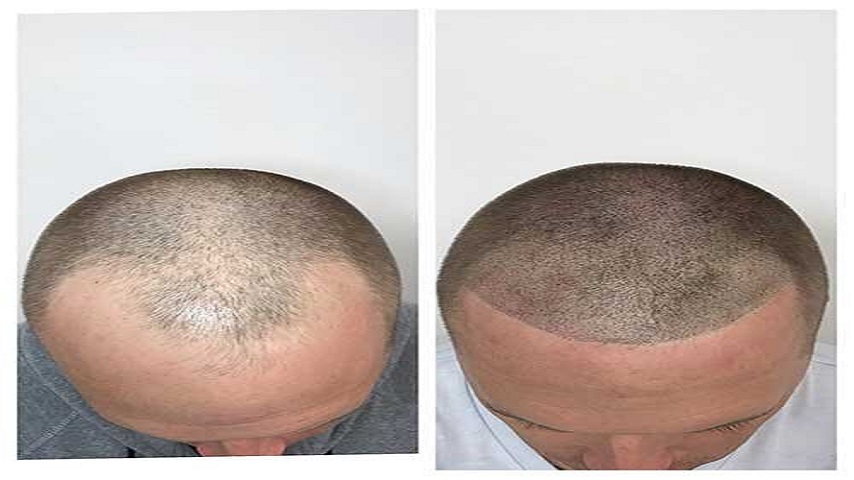Hair loss can be a distressing experience, impacting both personal appearance and self-confidence. For many, finding an effective solution is a top priority. One of the most promising treatments that have gained popularity in recent years is Platelet-Rich Plasma (PRP) therapy. This innovative, non-surgical treatment harnesses the body’s natural healing abilities to stimulate hair growth and combat hair loss. In this post, we explore how PRP therapy works, its benefits, and why it is becoming a successful option for hair restoration.
What is PRP Therapy for Hair Loss?
Platelet-Rich Plasma (PRP) therapy is a medical treatment that involves using the patient’s own blood to promote hair growth. The process includes drawing a small amount of blood, which is then placed in a centrifuge to separate the platelet-rich plasma from other components. The concentrated plasma, rich in growth factors, is injected into the scalp to stimulate hair follicles and encourage new hair growth.
The Science Behind PRP Therapy
The effectiveness of PRP therapy lies in the regenerative properties of platelets, which are critical components of blood involved in healing and tissue regeneration. Here’s how PRP therapy helps combat hair loss:
- Activates Dormant Hair Follicles: Hair loss often occurs when hair follicles become dormant or inactive. PRP therapy stimulates these dormant follicles, activating them to enter the growth phase and produce new hair.
- Enhances Scalp Health: PRP contains growth factors that improve blood circulation in the scalp, providing hair follicles with the nutrients and oxygen needed for optimal growth. This enhanced blood flow also helps maintain scalp health, which is vital for preventing further hair loss.
- Boosts Hair Thickness and Density: In addition to stimulating new hair growth, PRP therapy helps thicken existing hair strands and improve hair density. This dual action makes the hair appear fuller and healthier over time.
- Reduces Hair Shedding: PRP helps strengthen hair follicles, reducing hair shedding and breakage. Patients often notice a decrease in hair loss after a few sessions, which helps in maintaining overall hair volume.
Benefits of PRP Therapy for Hair Loss
PRP therapy offers several advantages, making it a successful treatment for those suffering from hair loss:
- Minimally Invasive Procedure: PRP therapy is a non-surgical treatment, involving only injections. This makes it less invasive compared to other hair restoration procedures like hair transplants.
- Natural and Safe: As PRP therapy uses the patient’s own blood, there is minimal risk of allergic reactions or infections. This natural approach makes it a safer alternative to chemical treatments or medications that might have side effects.
- Quick and Convenient: The entire PRP process, from blood draw to injection, typically takes about an hour. There is no significant downtime, allowing patients to return to their daily activities immediately.
- Long-Lasting Results: With proper care and maintenance, the results of PRP therapy can be long-lasting. Patients often see significant improvements in hair growth and thickness within a few months.
What to Expect During PRP Therapy
A typical PRP therapy session includes the following steps:
- Initial Consultation: The process begins with a consultation with a hair restoration specialist to determine if PRP therapy is suitable for the patient’s specific type of hair loss.
- Blood Collection: A small amount of blood is drawn from the patient’s arm, similar to a standard blood test.
- Plasma Preparation: The collected blood is placed in a centrifuge to separate the platelet-rich plasma from other blood components.
- Scalp Injections: The concentrated PRP is injected into areas of the scalp where hair thinning or loss is most evident.
Patients may experience mild discomfort during the injection process, but this is generally well-tolerated and does not require any recovery time.
How Many PRP Sessions Are Needed for Optimal Results?
The number of PRP sessions required for optimal results varies depending on the individual’s condition and response to treatment. Typically, a series of three to four sessions, spaced about four to six weeks apart, is recommended initially. Maintenance sessions may be required every six months to a year to sustain the results.
Are There Any Side Effects?
PRP therapy is considered a low-risk procedure with minimal side effects. Some patients may experience mild swelling, redness, or tenderness at the injection sites, which usually subsides within a few days. As the treatment uses the patient’s blood, there is minimal risk of allergic reactions or serious complications.
Why PRP Therapy is a Successful Option for Hair Restoration
PRP therapy has proven to be a successful treatment for many individuals experiencing hair loss. Its natural approach, combined with the ability to target the underlying causes of hair thinning, makes it an effective and desirable option. By stimulating hair follicles, enhancing scalp health, and reducing hair shedding, PRP therapy helps patients achieve fuller, thicker hair and restore their confidence.
Conclusion
Unlocking success in combating hair loss requires a treatment that not only addresses the symptoms but also the root causes. PRP therapy stands out as a highly effective option, offering a safe, natural, and non-surgical solution for hair restoration. If you’re considering PRP therapy, consult with a qualified hair restoration specialist to determine if this innovative treatment is right for you. With PRP therapy, achieving a full head of hair and regaining your confidence is within reach. read more







